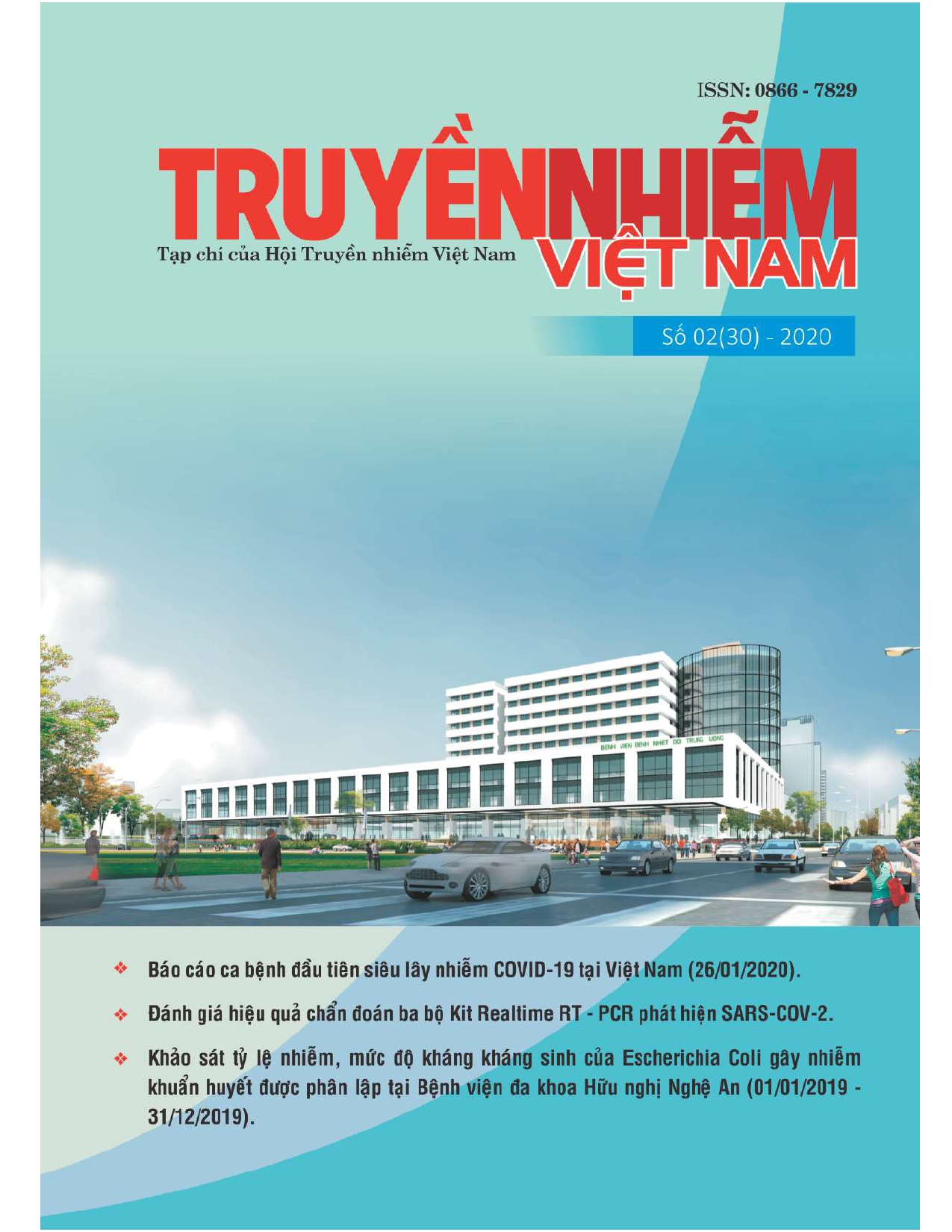EPIDEMIOLOGY, CLINICAL CHARACTERISTICS, LESION ON CHEST X RAY AND CT-SCANNER IMAGING OF COVID-19 TREATED IN NATIONAL HOSPITAL FOR TROPICAL DISEASE FROM 26/1/2020 TO 26/4/2020
Main Article Content
Abstract
Objective: Study the epidemiological, clinical characteristics, Chest X-ray and CT imaging of COVID-19 patients.
Subjects and methods: A prospective observational study of 145 COVID-19 patients who were admitted at the National Hospital for Tropical Diseases, from 26/1/2020 to 2/4/2020.
Results: The disease was more common in females than males (female/male = 2/3), in all ages, the average of age was 38.57 ± 15.42 years; 55.9% of patients come from abroad. Clinical manifestations with non - specific symptoms and signs such as cough (54.5%), sore throat (26.9%), fever (22.1%). Less common symptoms were myalgia/arthralgia (13.1%), chest tightness (8.3%), shortness of breath (6.2%), headache (7.2%), diarrhea (2.8%) and runny nose (2.1%) and loss of sense of smell (1,4%). 46.2% of patients were found abnormal on chest X-ray. The most frequent findings were airspace opacities, whether described as ground - glass opacities (36.6%) or consolidation(17.9%) furthermore thick interstitial tissue (27.6%) and bronchial wall thickening (17.2%). 69.7% of patients had lesions on chest CT film such as as ground - glass opacities (66.2%), consolidative opacities (41.4%), interstitial thick tissue (10.3), swollen glands (9.6%) and pleural effusion (6.1%). The majority of lesions were in the peripheral region, lower lobe (62.1%) and in both of the lungs (46.2%).
Conclusion: COVID-19 patients in the study were in different ages, females more than males, most of whom came from abroad. Most of the patients have not gotfever orshortness of breath but maybe to have dry cough or sore throat. X-ray and chest CT are valuable for diagnosing lung damage and monitoring disease progression. Moreover, CT scanner is likely higher and earlier than the chest X-ray to detect lesions. Almost all common lesions were ground-glass opacities, consolidative opacities and thick interstitial tissue. The distribution of lesions is most often bilateral, peripheral, and lower zone predominant of both lungs.
Article Details
Keywords
Coronavirus disease - 2019, COVID-19, SARS-CoV-2


